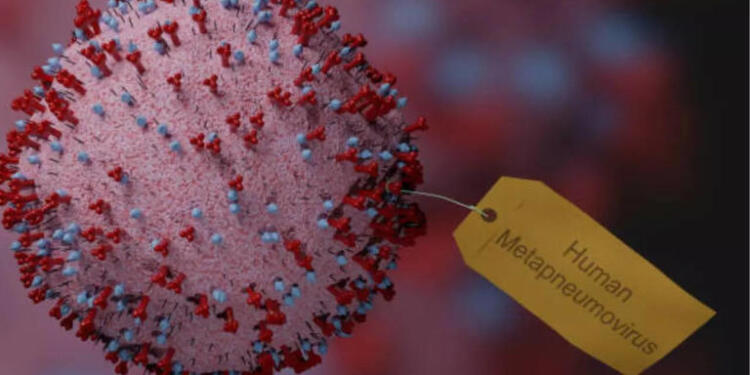The Chinese are battling an increased surge of respiratory infections now that the winter months are around the corner. In particular, a new type of virus that is being identified as Human Metapneumovirus (HMPV) has started registering increased cases, prompting health authorities to keep their vigil up for this rapidly spreading viral disease in the country amidst the lingering COVID-19. Especially alarming are the cases where the number of infections has skyrocketed among children under 14 years old.
Despite reports circulating on overwhelmed hospitals and crematoriums, neither of the entities has made a public statement that could be believed. Chinese authorities and the World Health Organization are still mum regarding the situation; they have no clear information released yet despite having numerous discussions regarding the situation online. Many people are apprehensive about how this new virus will affect things, but scientists are saying several respiratory viruses that include HMPV, Influenza A, Mycoplasma pneumonia, and COVID-19 are all alive at the same time.
What Is Human Metapneumovirus (HMPV)?
Human Metapneumovirus (HMPV) is an RNA virus belonging to the Metapneumovirus genus within the Pneumoviridae family. It was identified by Dutch researchers in 2001, as they were working on respiratory infections in children. Since then, it has emerged as a key respiratory pathogen that is distributed worldwide. HMPV is mainly transmitted through respiratory droplets released while coughing or sneezing, but it may also be transferred through close contact or touching fomites.
Despite its all-year round presence, the HMPV virus is usually prevalent during winter and spring seasons. The Chinese health authorities have also reported the increased cases mainly during the colder season, as the season normally records a spread of respiratory illnesses.
Symptoms of HMPV
The symptoms of Human Metapneumovirus are similar to other common infections like the common cold and COVID-19. The infections caused by HMPV generally have symptoms of coughing, fever, nasal congestion, sore throat, and generalized cold-like syndromes. It may sometimes evolve into severe forms of respiratory disease, especially among the susceptible, such as pneumonia. The illness is mostly benign, but more severe manifestations have been noted among younger children and older adults, for which they must be hospitalized.
The Chinese health authorities have warned the public that the ongoing outbreak could strain the country’s healthcare system, as hospitals are already dealing with a high volume of patients. In particular, children’s hospitals are facing an influx of pneumonia cases, some of which are severe and present as “white lung,” a condition where the lungs become severely inflamed.
Why Is the Virus Spreading So Rapidly?
The increase in cases of HMPV has also raised concerns, as it coincides with flu season and other respiratory diseases. According to experts, this surge can be partly attributed to the changes in social behavior during the COVID-19 pandemic. Lockdowns and strict social distancing measures confined exposure to respiratory viruses, leading to lower immunity levels in populations, especially children. Now that restrictions have lifted and people are returning to normal social interactions, a “catch-up” effect is happening. Thus, people, mainly children, are being exposed to a variety of viruses, such as HMPV, all at once.
Who’s at Risk?
Like COVID-19, Human Metapneumovirus poses a greater risk to vulnerable populations, particularly children under the age of 14 and older adults. Children are especially vulnerable since they may have had limited exposure to many of the common respiratory pathogens during the pandemic. The elderly are also at higher risk because of weaker immune systems.
Health authorities have cautioned the public to take preventive measures such as wearing masks, frequent hand washing, and avoiding crowded places. These simple precautions can limit the spread of HMPV and other respiratory viruses. However, despite the widespread circulation of the virus, no vaccine for HMPV has been developed yet, making it even more important for people to take personal protective measures.
Current Situation and Health Precautions
The disease control authority in China took the step of designing a specific monitoring system for acute respiratory diseases and pneumonia caused by unknown pathogens. This is within an initiative meant to prepare much better for surges in seasons and prevent future outbreaks of the new viruses just like the pandemic caused by COVID-19.
In addition to HMPV, the flu virus and Mycoplasma pneumoniae are said to be raging in China. The situation becomes more complicated since several pathogens simultaneously circulate around the same period. In several areas, some children’s hospitals have been overstretched due to these multiple pathogens, and health experts are calling for increased vigilance and caution, especially in the winter.
While the discovery of HMPV in China is alarming, and particularly since the COVID-19 pandemic, the health sector has taken its control. This virus shares some common features with many other infections caused by the respiratory system but remains a significant risk for the susceptible group, particularly the elderly and children. With the onset of cold winter months, it is important that people adhere to all the recommended health guidelines such as wearing masks, frequent hand hygiene, and avoidance of crowded places to minimize the spread of this virus and other respiratory illnesses. Meanwhile the Indian Health Body chief has assured the public that there is nothing to be alarmed about regarding this illness.































